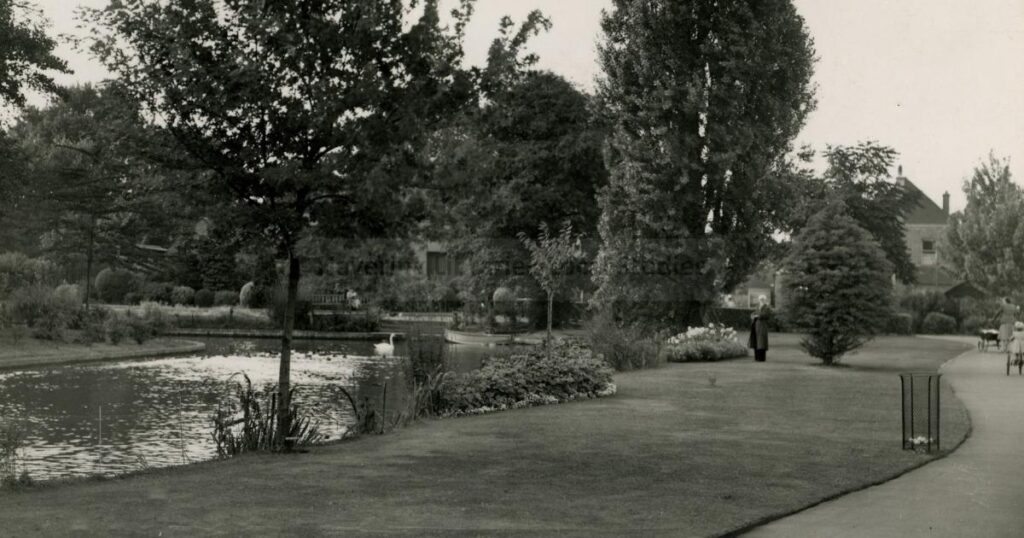This week, the Recorder is looking back at the history of Clockhouse Gardens – a small open space in Upminster on the site of an 18th century manor house.
The ornamental gardens were built by Sir James Esdaile in 1775 and were part of New Place – an estate that measured up to 70 acres by 1909.
After the death of the last resident of the manor in 1924, New Place house was demolished, leaving only the stable block within the grounds.
READ MORE: PHOTOS: A look back at Havering parks and green spaces
This was called The Clockhouse, giving rise to the new name for the site.
Clockhouse Gardens in 1962 (Image: Havering Libraries-Local Studies)
The block – a red brick, Grade II-listed building which is still standing today – features a small rectangular turret with a circular black clock face, which is said to have come from the Woolwich Arsenal.
According to Havering Council, The Clockhouse was used as council offices from 1924 to 1934 and then as a branch of Hornchurch Library between 1936 and 1963.
During the Second World War, vegetables were grown on the site, mainly to provide for civic restaurants.
Although Clockhouse Gardens officially opened as a public park in 1939, it was not until after the war that the site was developed into what it is today.
READ MORE: Nostalgia: Do you know where borough’s last remaining moats are?

The historic moat – which survives today – was well stocked with fish in the 1960s, most of which were moved from Langtons Gardens when its lake was cleaned out in 1953 to 1954.
It is one of the last surviving moats in Havering – the other one is in Dagnam Park.
A bowling green was also constructed in the early 1950s, which now provides a home for The Clockhouse Bowling Club.
In 2009, a sculptural feature of wooden figures was unveiled in a woodland setting by the lake.




